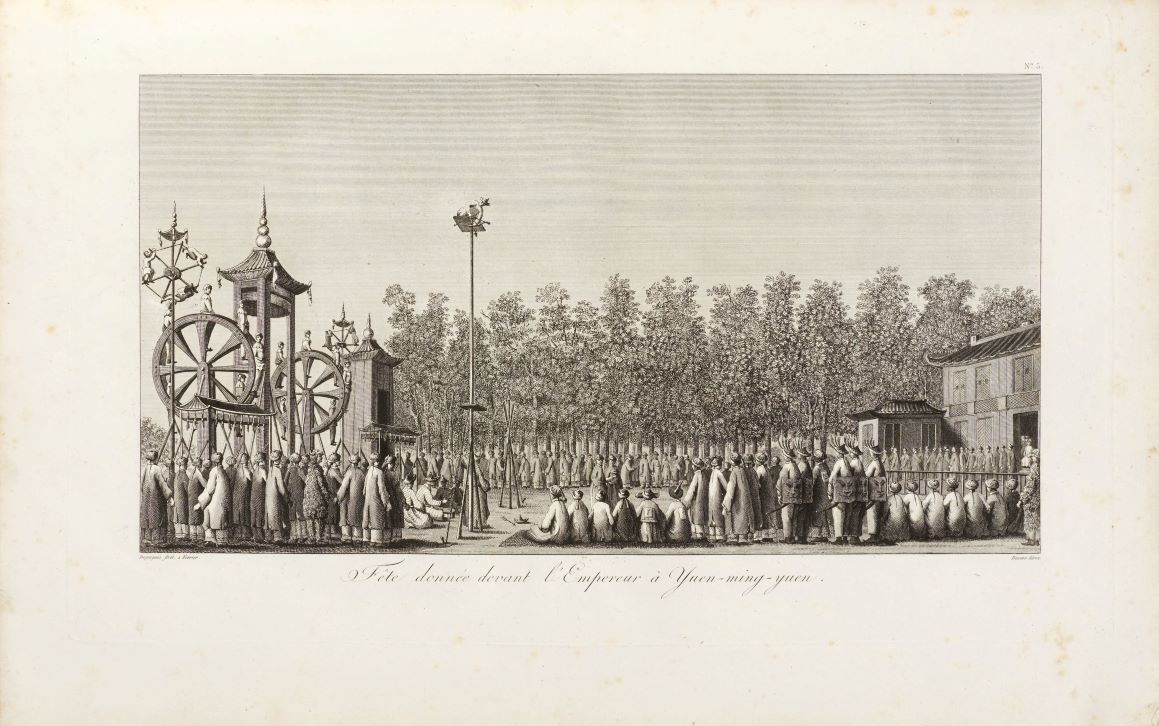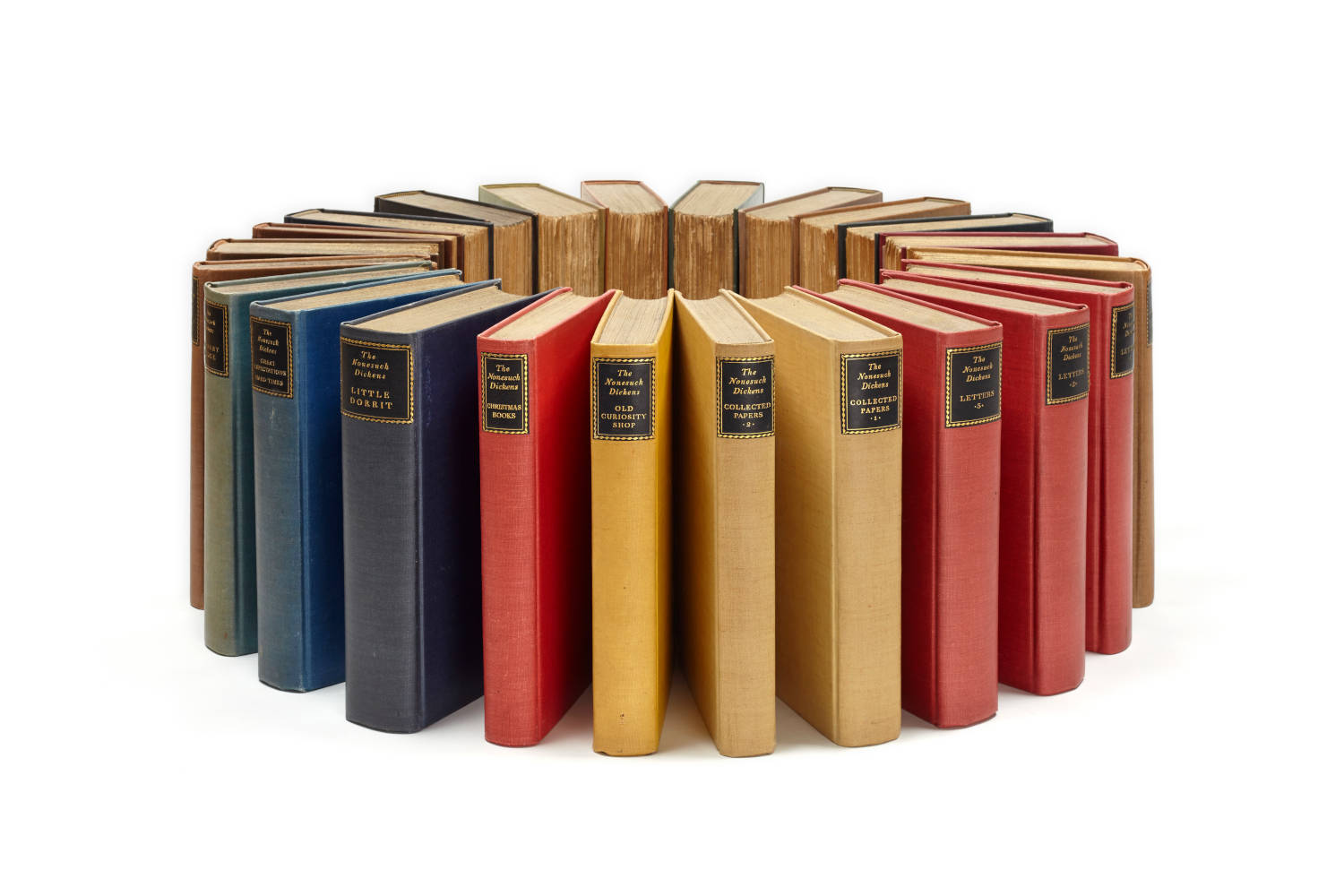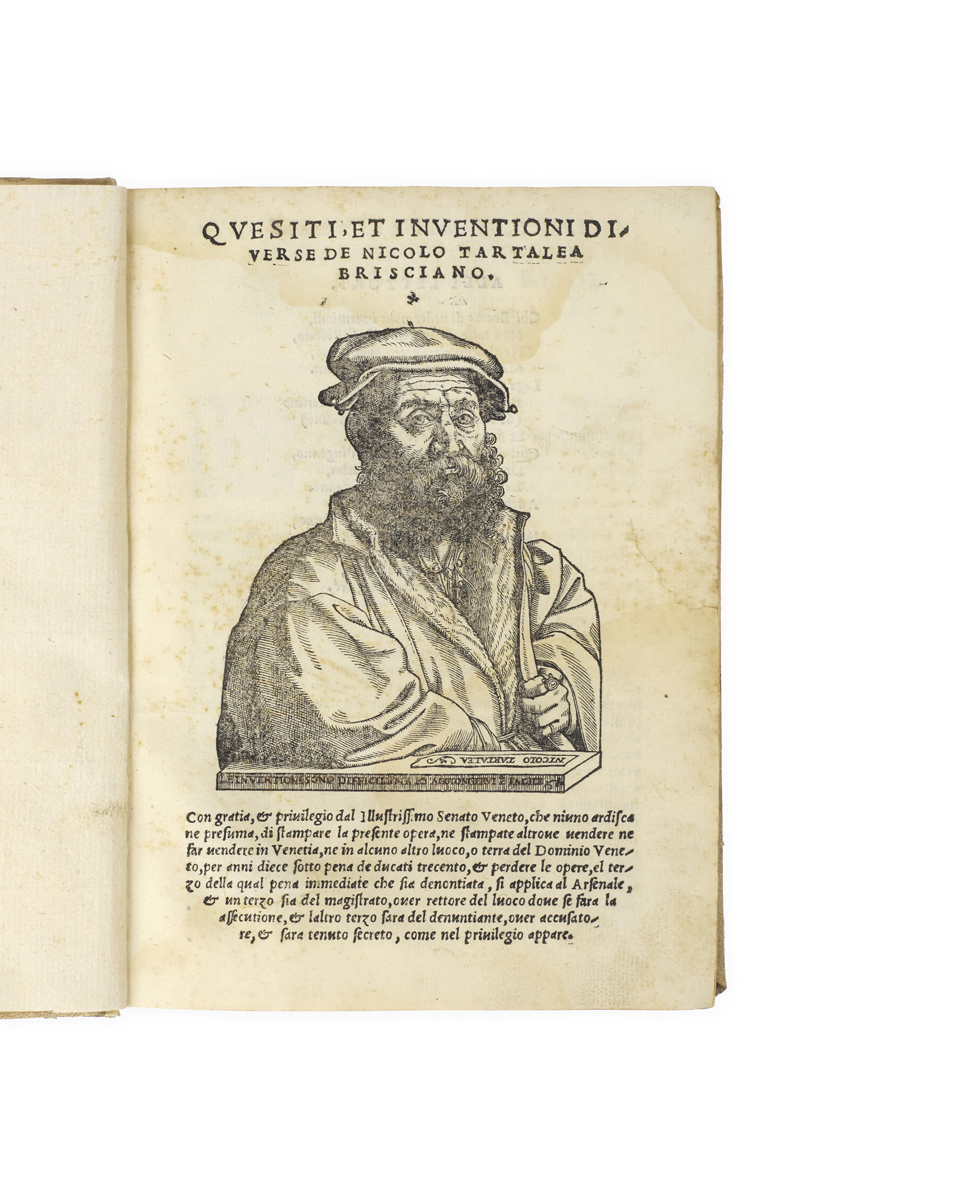
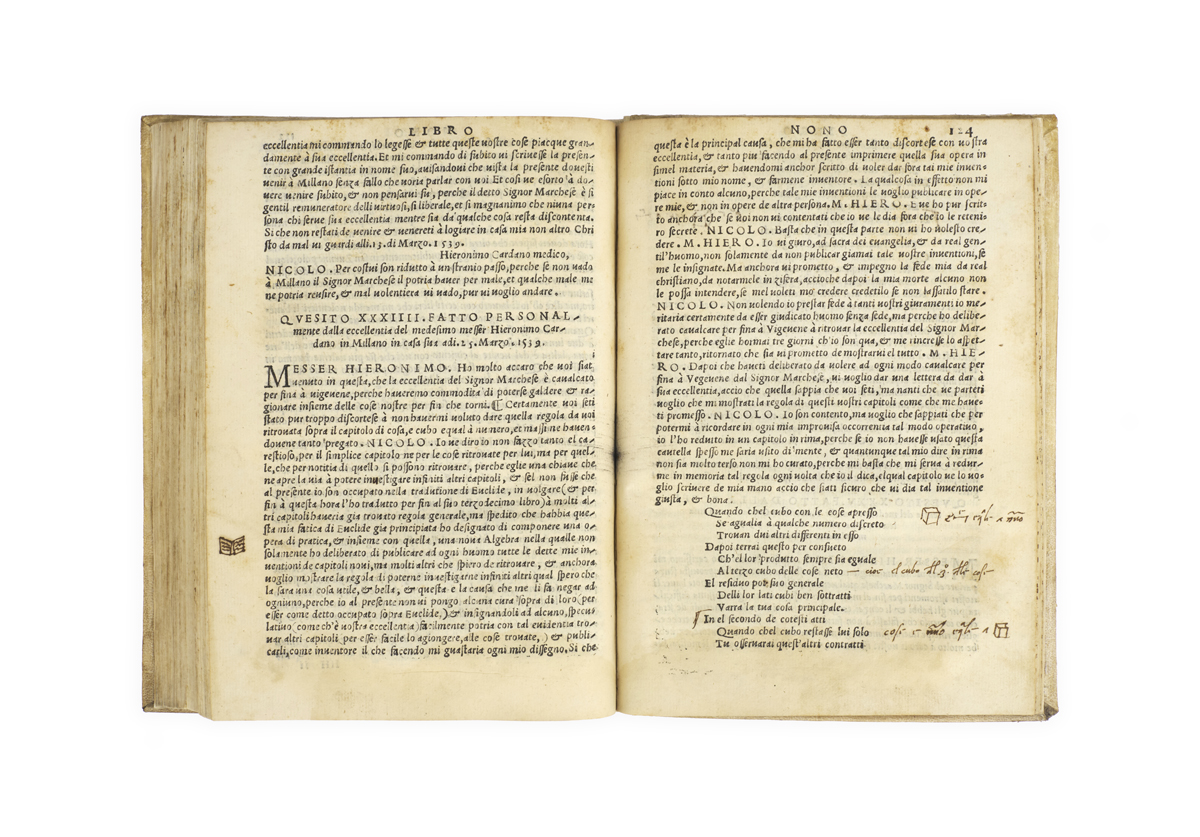
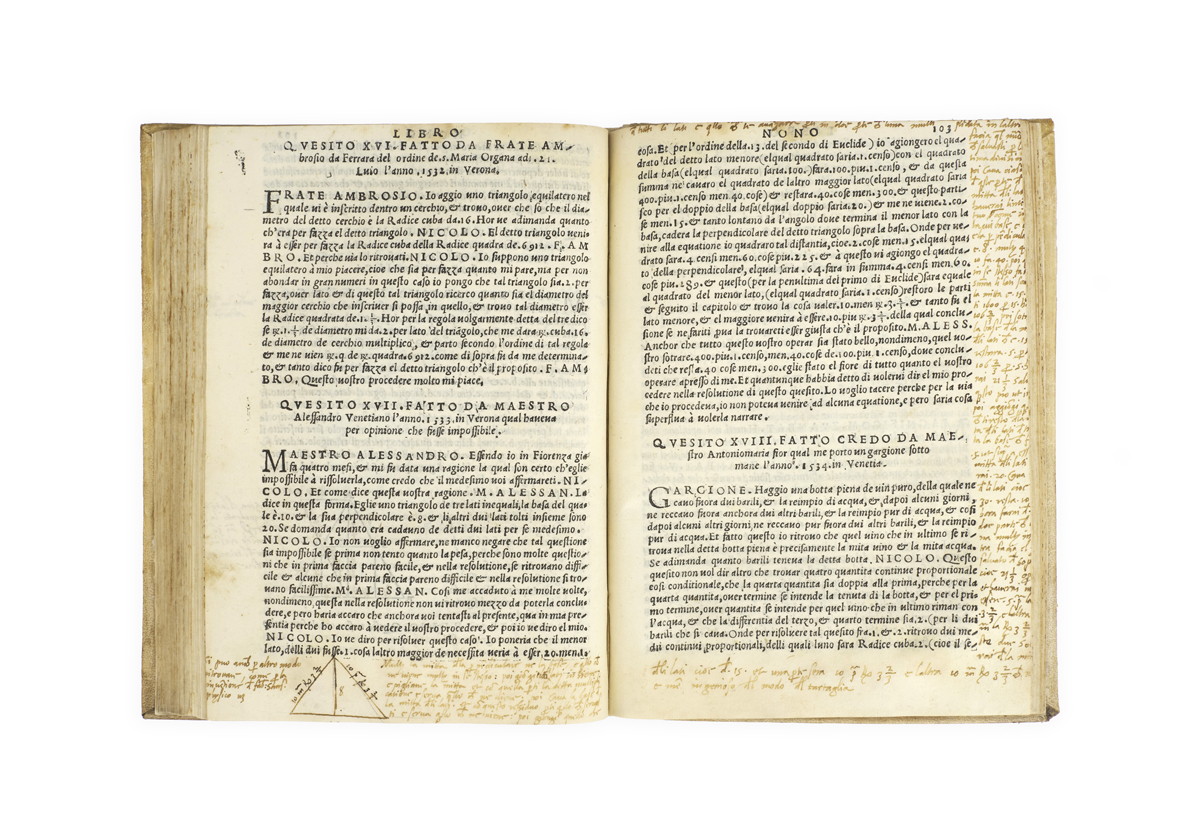
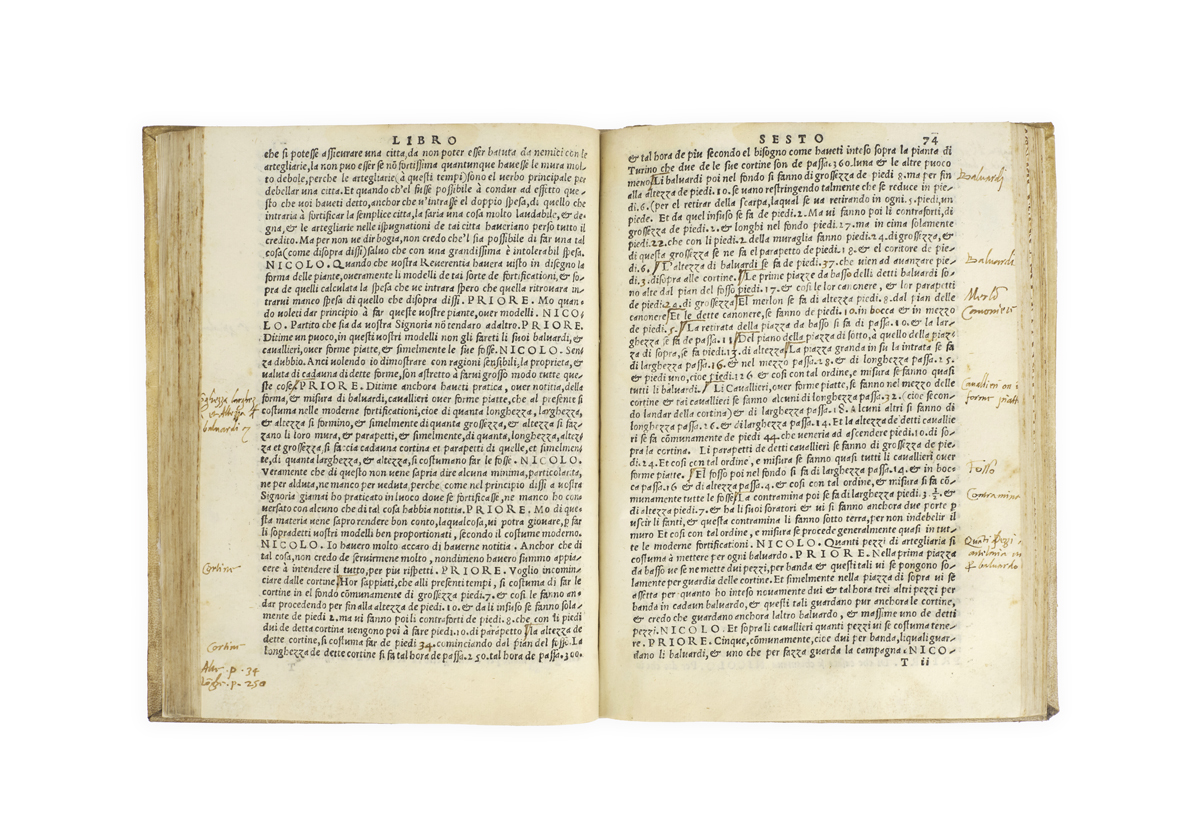
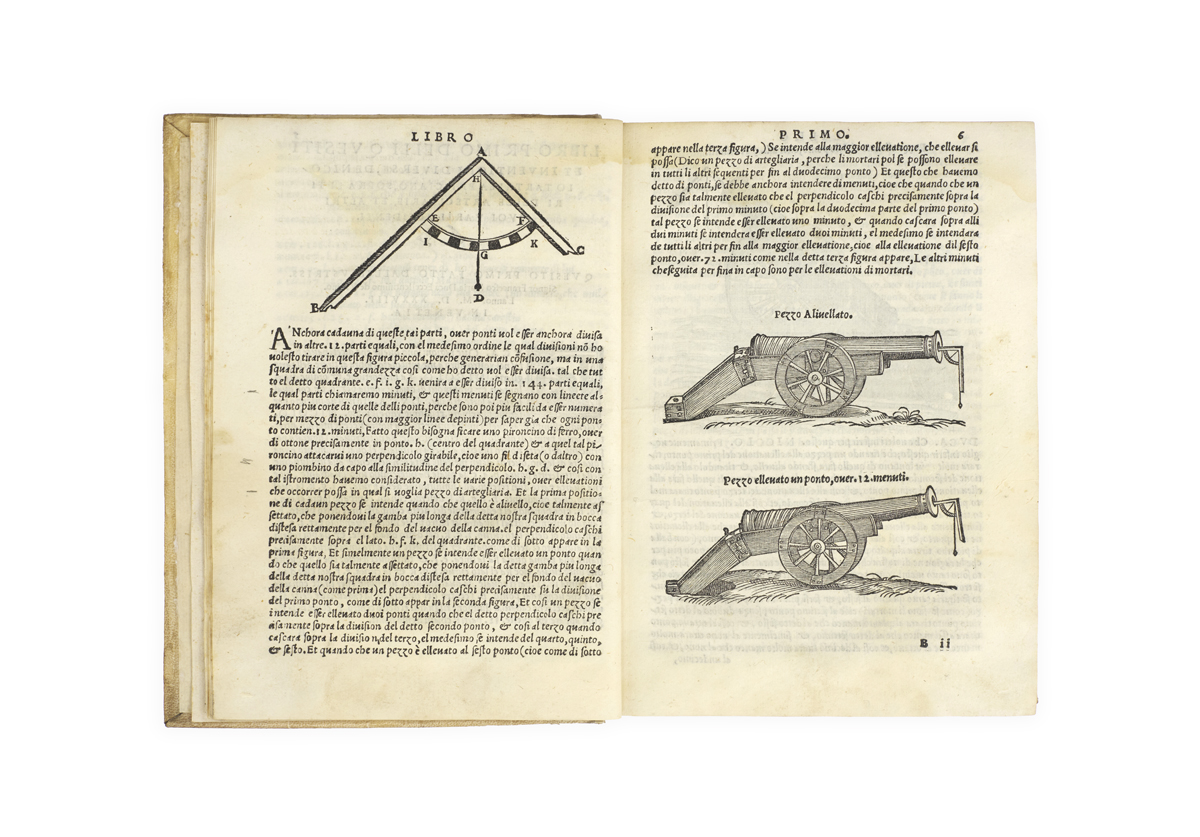
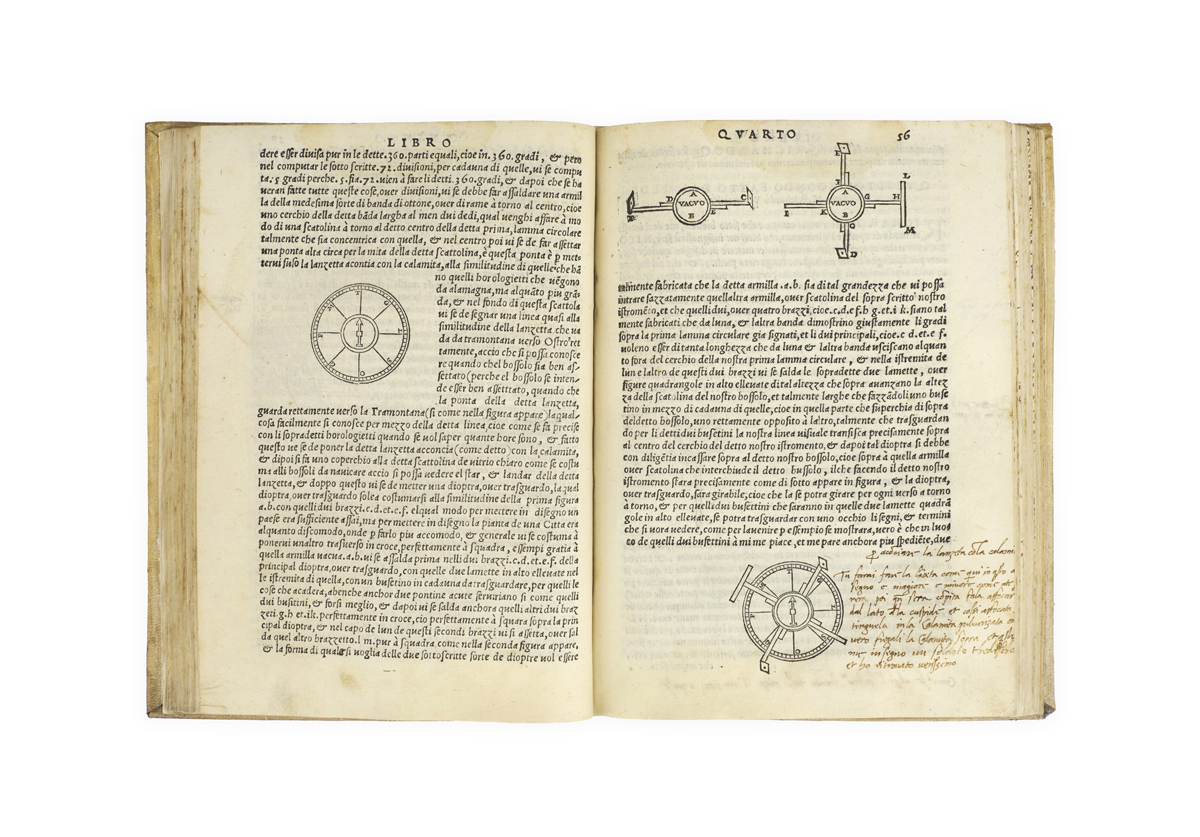

WITH ANNOTATIONS ON ARTILLERY AND ALGEBRA
TARTAGLIA, Niccolò Fontana.
Quesiti, et inventioni diverse.
Venice, Venturino Ruffinelli ‘ad instantia et requisitione, & a proprie spese de Nicolo Tartalea Brisciano Autire’, July 1546.
4to, ff. 132, [2 (contents)], without folding plate as usual; woodcut vignette of Tartaglia to title-page with the motto ‘Le inventioni sono difficili ma lo aggiungervi è facile’, historiated woodcut initials, over sixty in-text woodcut diagrams and illustrations; occasional light foxing, small marginal tear to title-page subtly repaired, a single marginal annotation on f. 124 excised; a very good copy in later rebacked vellum over pasteboard; small chip at foot of spine; contemporary annotations in Italian in light brown ink to 44 pp., errata corrected in manuscript.
First edition, annotated throughout by a contemporary reader, of Tartaglia’s highly influential work on ballistics and algebra, containing his polemical rule for solving cubic equations.
Brescian mathematician Niccolò Tartaglia (or Tartalea, 1499/1500–1557) taught mathematics at Verona in 1521 and in Venice in 1534, publishing the first Italian translations of Euclid and Archimedes and originating the science of ballistics in his 1537 Nova scientia. Divided into nine books, the present work is dedicated to Henry VIII, whose interest in the study of warfare had been indicated to Tartaglia by Richard Wentworth, the king’s envoy in Venice. Wentworth is one of the many interlocutors in Tartaglia’s 171 dialogic quesiti, in which the author discusses the merits of cannonballs made from lead, iron, and stone, saltpetre and the creation of gunpowder, methods of fortification, arithmetic, geometry, and algebra.
‘The most important mathematical subject with which Tartaglia’s name is linked is the solution of third-degree equations. The rule for solving them had been obtained by Scipione Ferro in the first or second decade of the sixteenth century but was not published at the time. It was rediscovered by Tartaglia in 1535, on the occasion of a mathematical contest with Antonio Maria Fiore […] On 25 March 1539, Tartaglia told Girolamo Cardano about it at the latter’s house in Milan. Although Cardano had persistently requested the rule and swore not to divulge it, he included it in his Ars magna (1545)’ (DSB). Tartaglia retaliates by publishing their correspondence within his quesiti, including Cardano’s solemn vows not to publish on cubic equations until Tartaglia did.
Our copy, containing the often-lacking table of contents, has been annotated in a single hand: this early reader takes particular interest in the manufacture of explosives and fortification, numbering the steps for making gunpowder and noting the names of key ingredients. Most copiously annotated, however, is the ninth and final book, in which the annotator, inter alia, visualises and checks Tartaglia’s equations through diagrams and calculations and provides an alternative method to the author’s ‘ingenioso modo’ of finding the side lengths of a scalene triangle.
Adams T-183; BM STC Italian, p. 658; Cockle, Foreign 660; DSB XIII, pp. 258-262; Marini, pp. 11-12; Norman II 2054; Riccardi II I:11; Wellcome I 6225.
